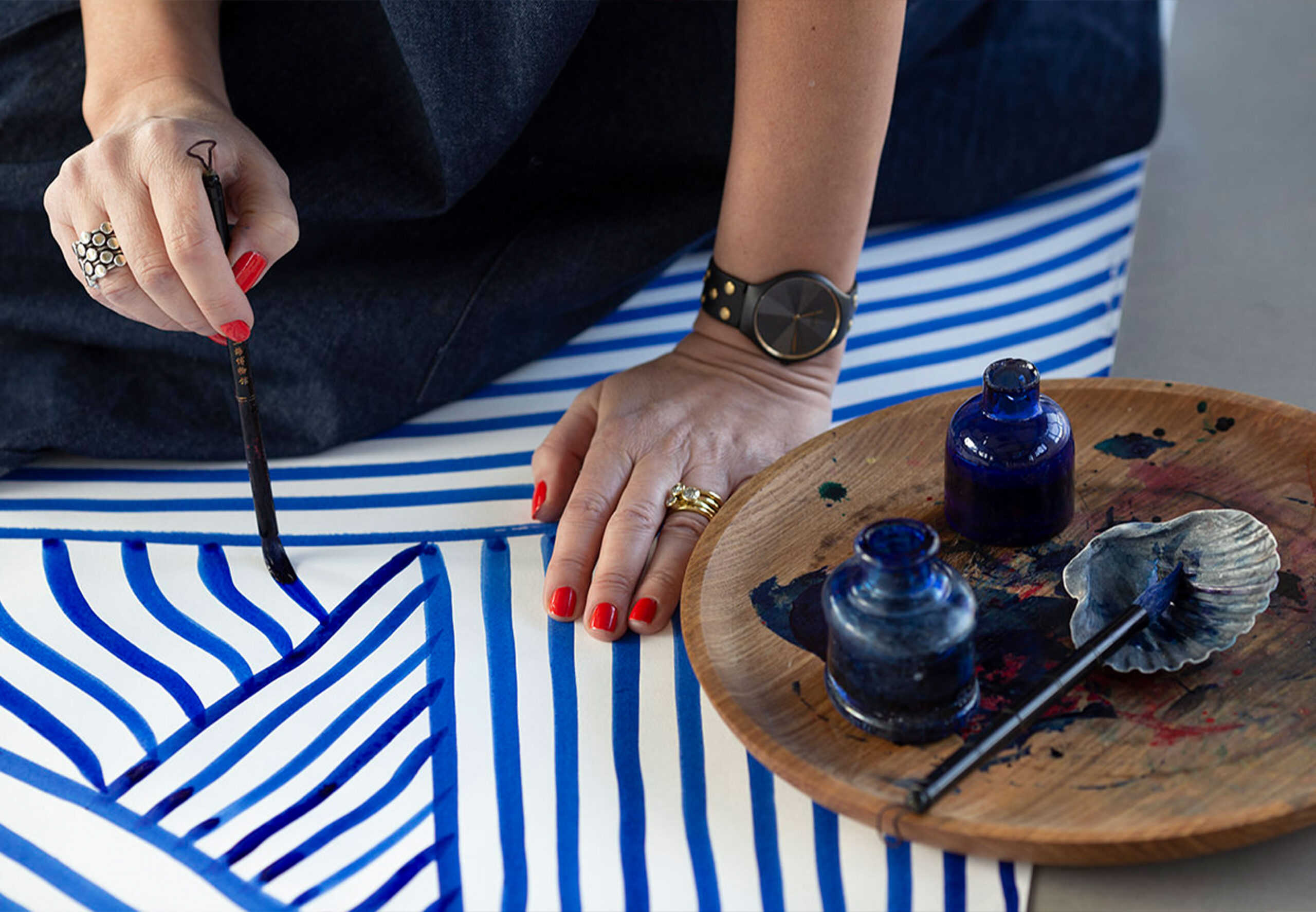
Inky Dhow Family
Bethan Gray’s love for travel and her deep-seated curiosity in global art and culture was the starting point for her ‘dhow’ pattern.
READ MORE

Bethan Gray’s love for travel and her deep-seated curiosity in global art and culture was the starting point for her ‘dhow’ pattern.
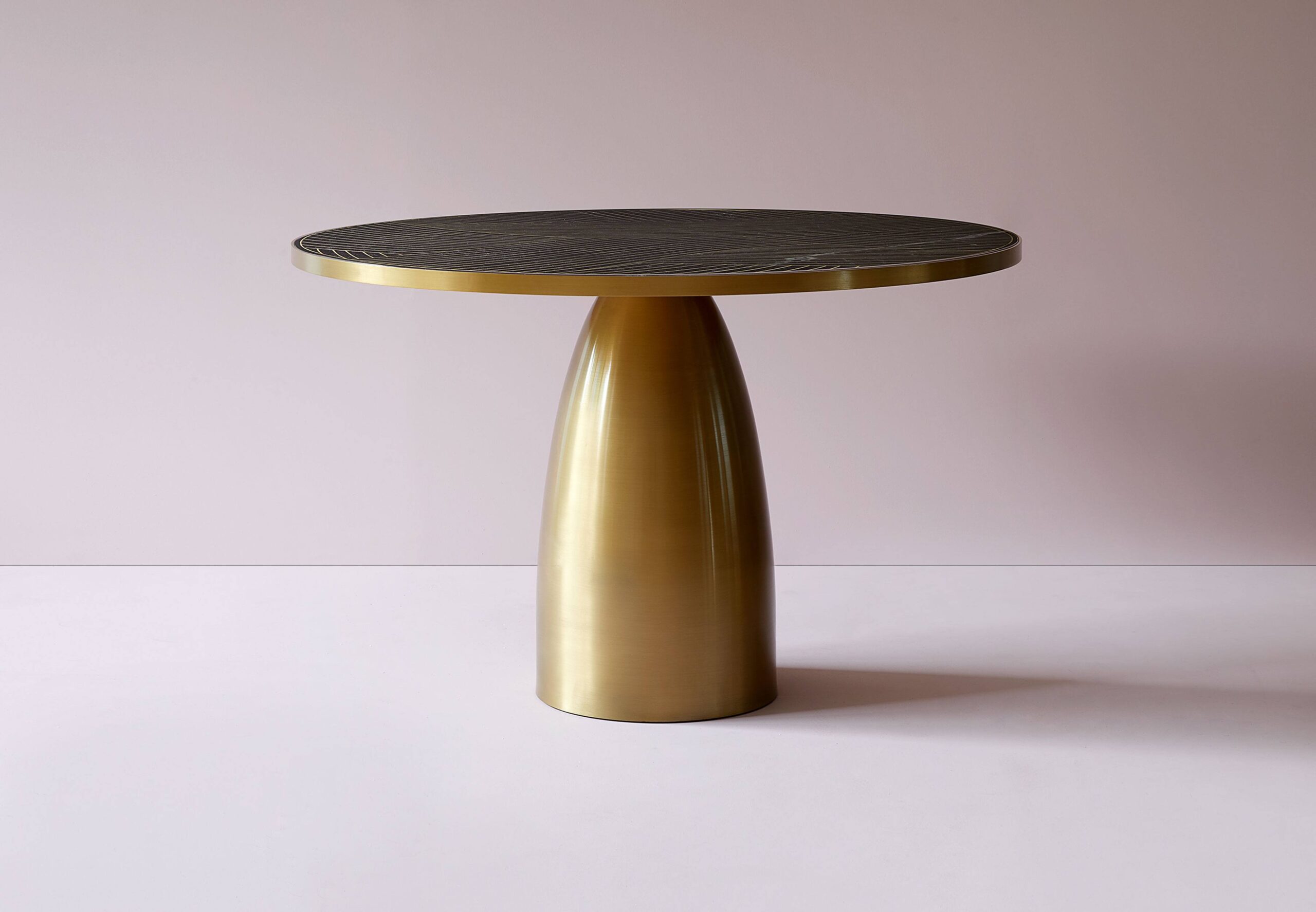
The distinctive pedestal leg is inspired by the arches and gilded domes typical of Middle Eastern architecture – Bethan wanted to capture the experience of exploring a new city and seeing the sunlight bounce off golden roofs.
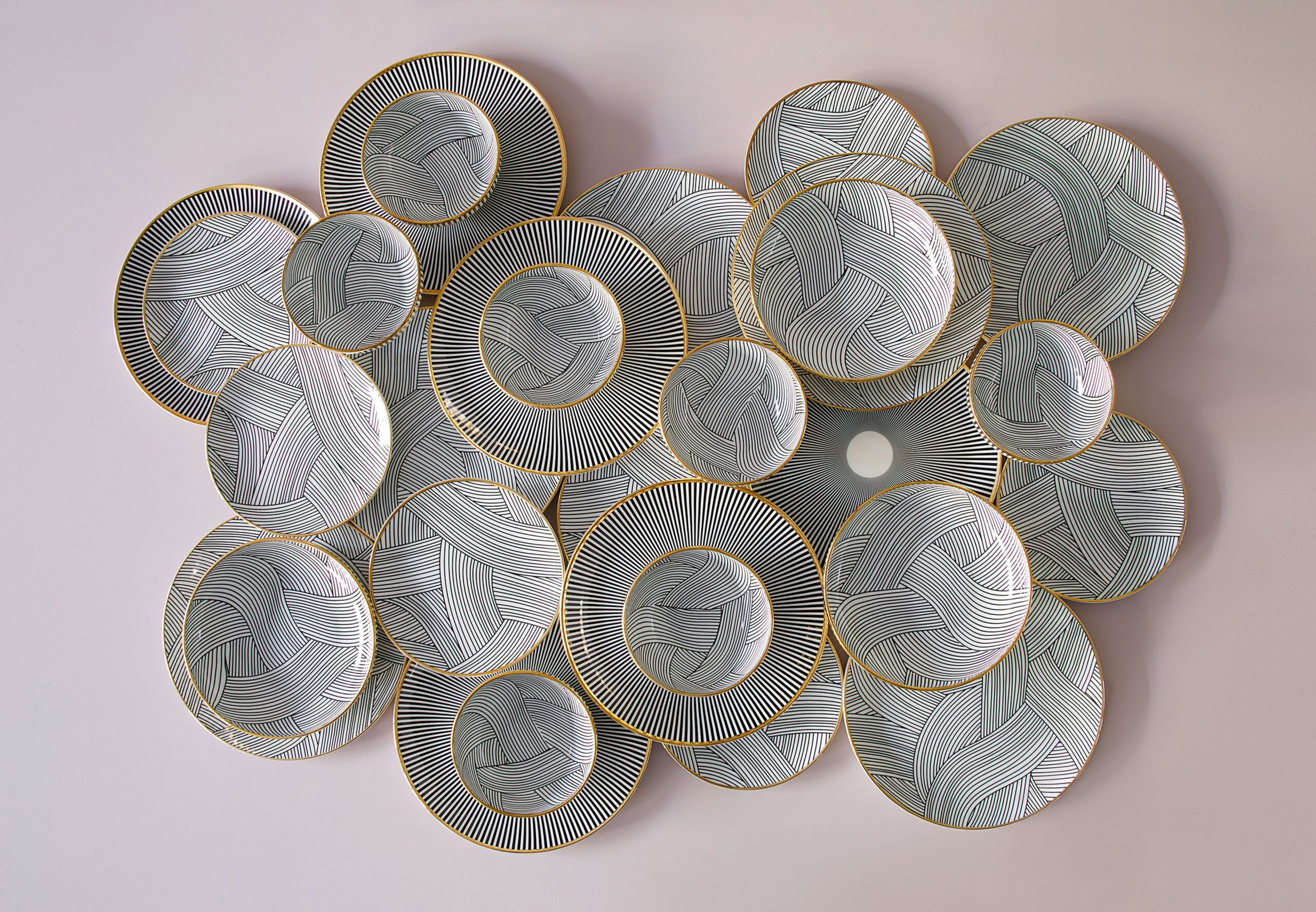
The Lustre tableware family features a reinterpretation of Bethan’s complex hand-drawn Dhow pattern originally inspired by the billowing sails of Oman’s distinctive sailing boats, together with her Stripe pattern inspired by 13th century Persian lustreware bowls.
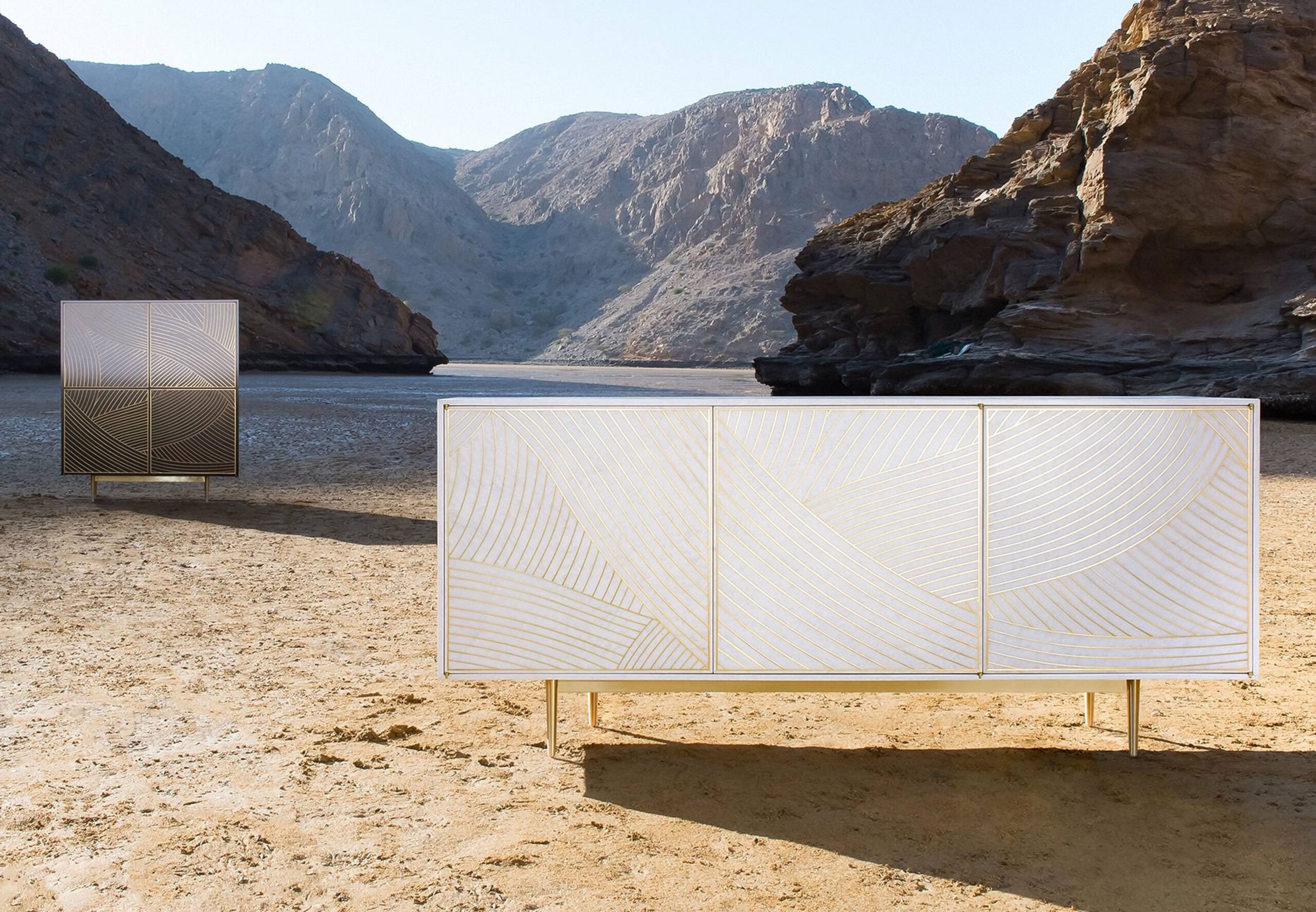
The Dhow family of furniture is inspired by the billowing sails of traditional Omani sailing boats – an important part of the nation’s maritime history.
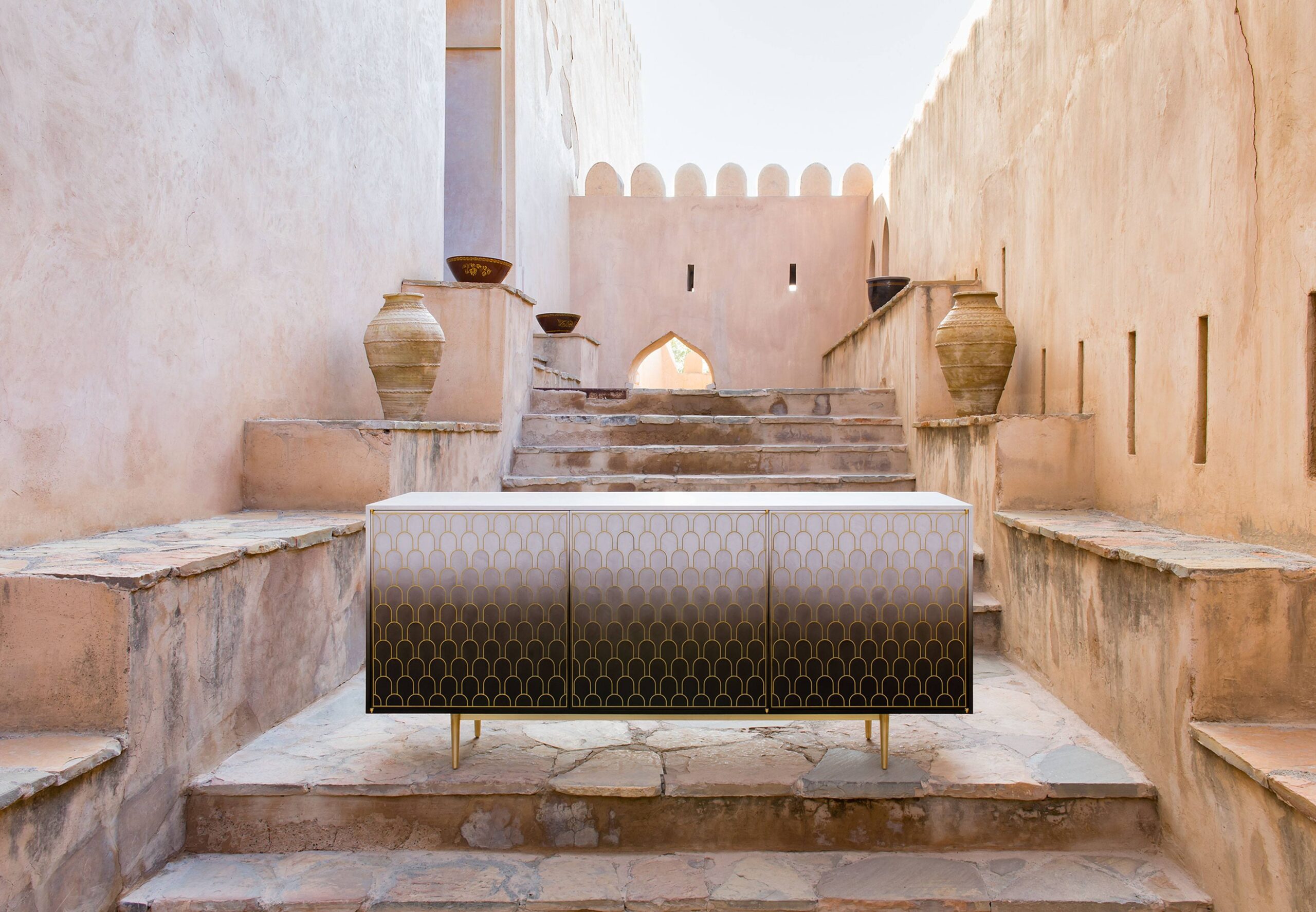
The Nizwa family of furniture is inspired by the rounded castellations of the Nizwa Fort in Oman and the ombré colour effect caused by the sunlight falling across them.
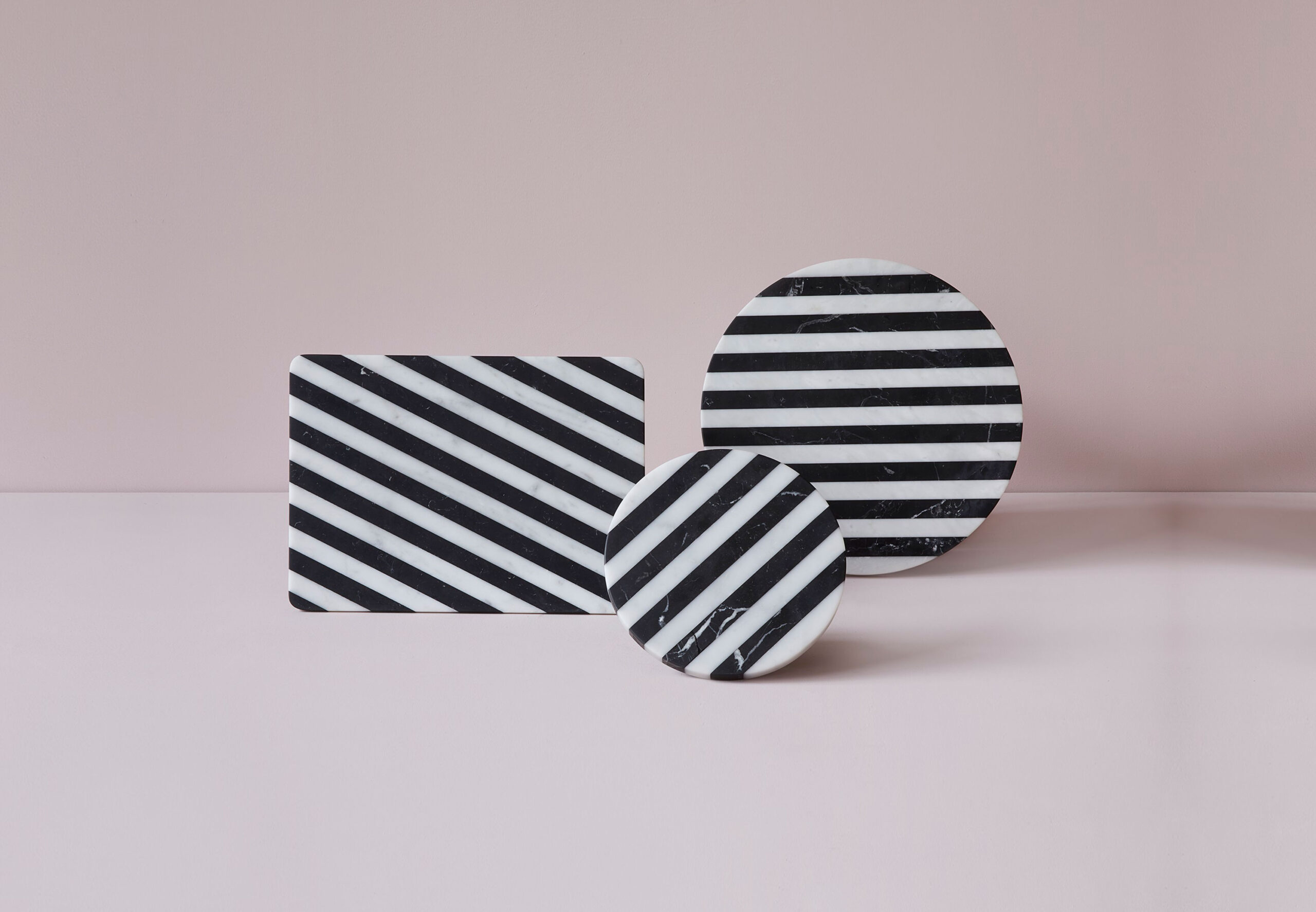
The Alice family of lighting and tableware is inspired by the spectacular black and white stone configurations found the 12th century Cathedral in the heart of Siena and originally designed for Wallpaper* Handmade as part of Milan Design Week.
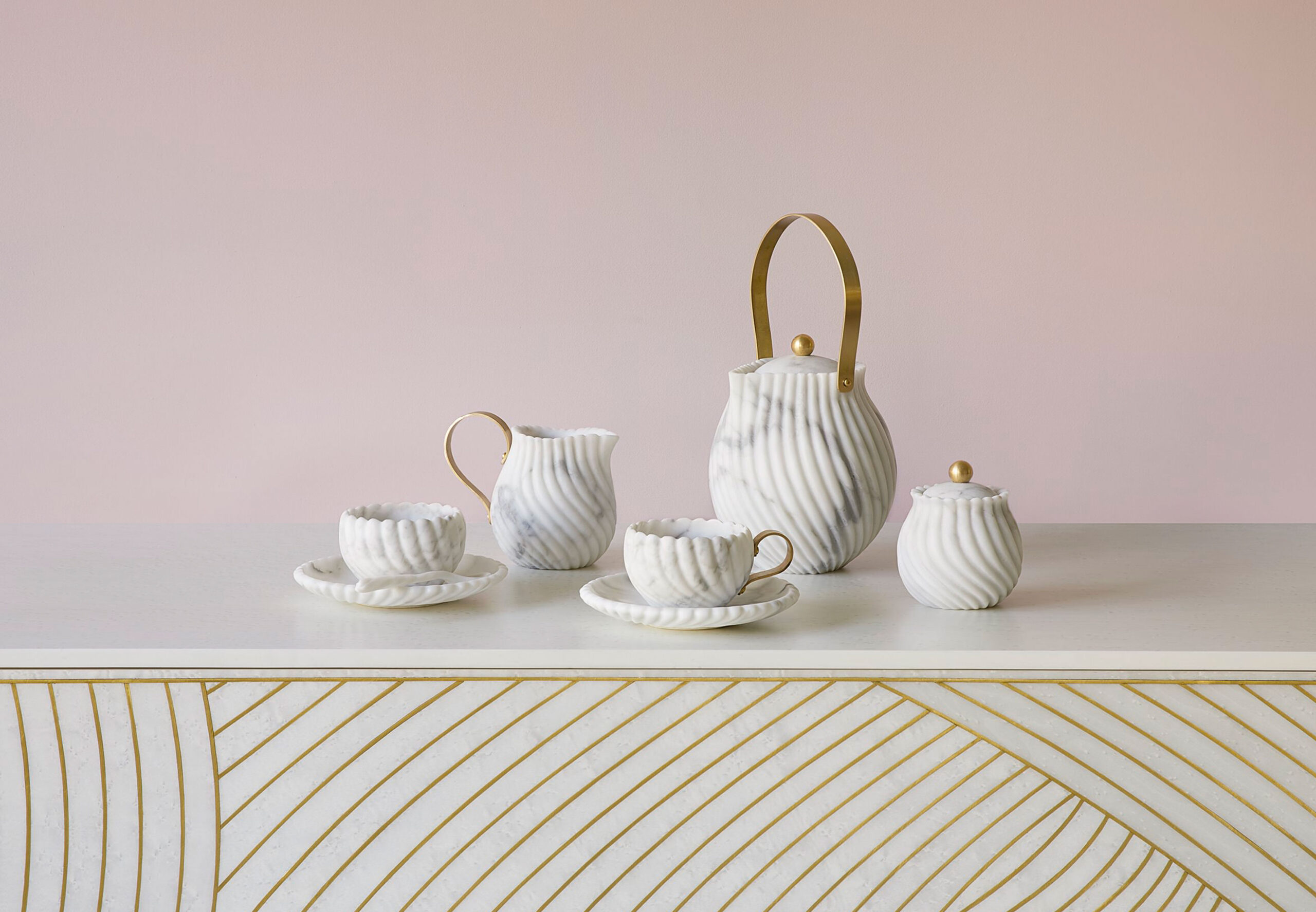
The Victoria tea set and lighting collection is inspired by the traditional teaware in the Victoria and Albert Museum’s archive in London.
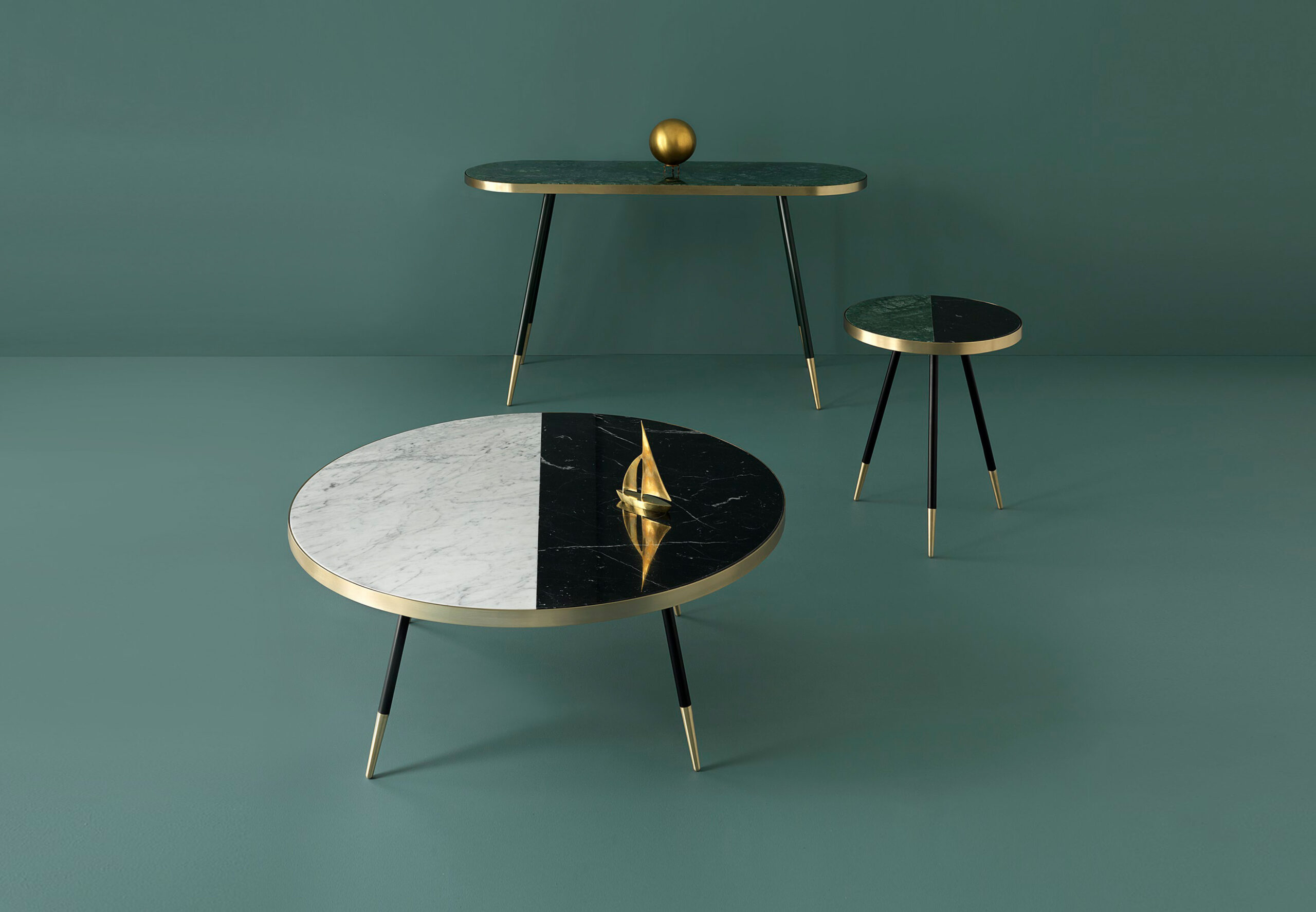
The band family of tables features a circle of warm brass encasing the marble top – available as one solid piece or two different types of marble, creating a two-tone effect echoing Siena Cathedral.
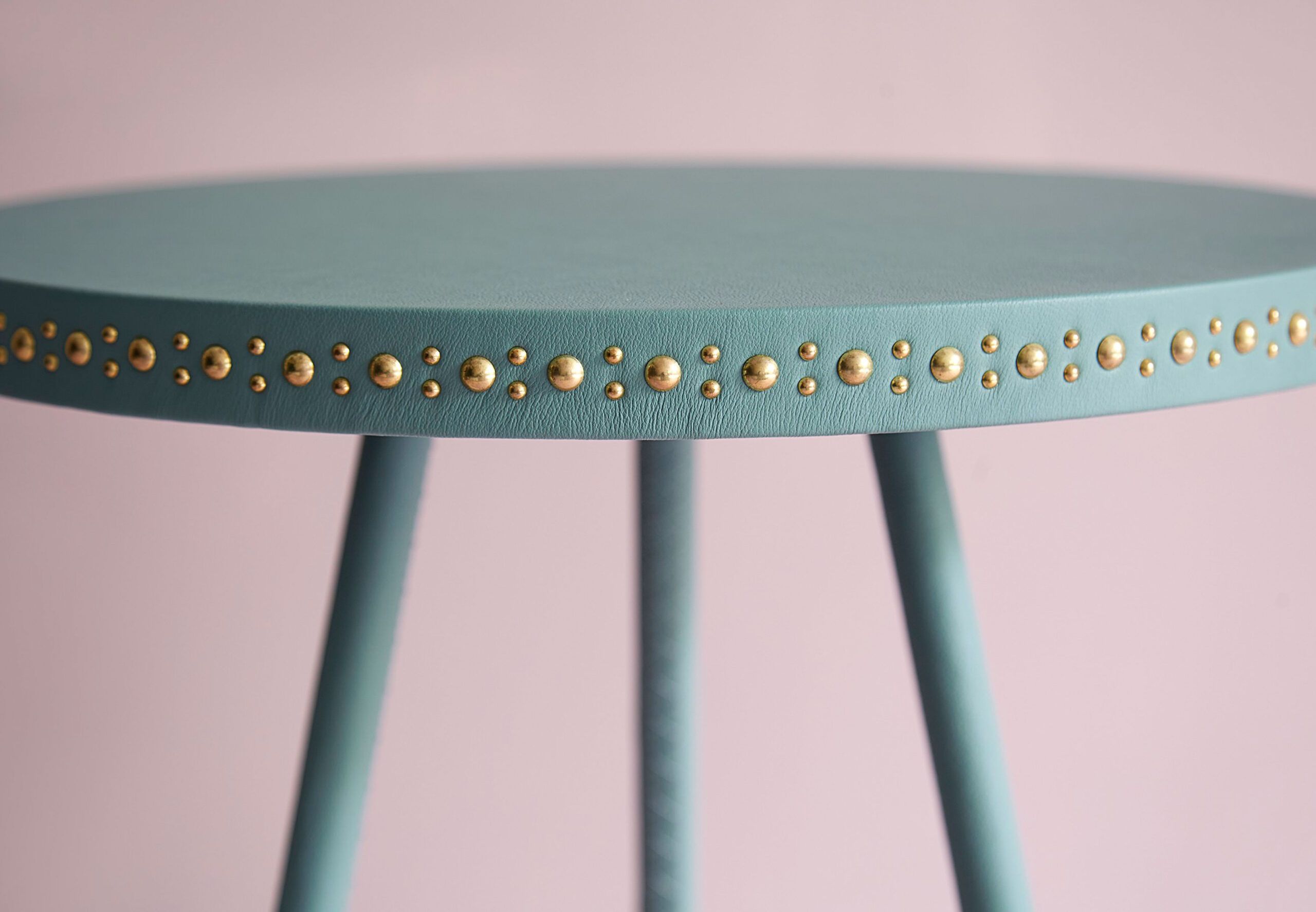
The Stud family of tables and mirrors is inspired by a Medieval studded door at Siena Cathedral. Studs were originally used to combine materials such as wood and leather and are now individually hand applied in brass or nickel to add warmth and intrigue.
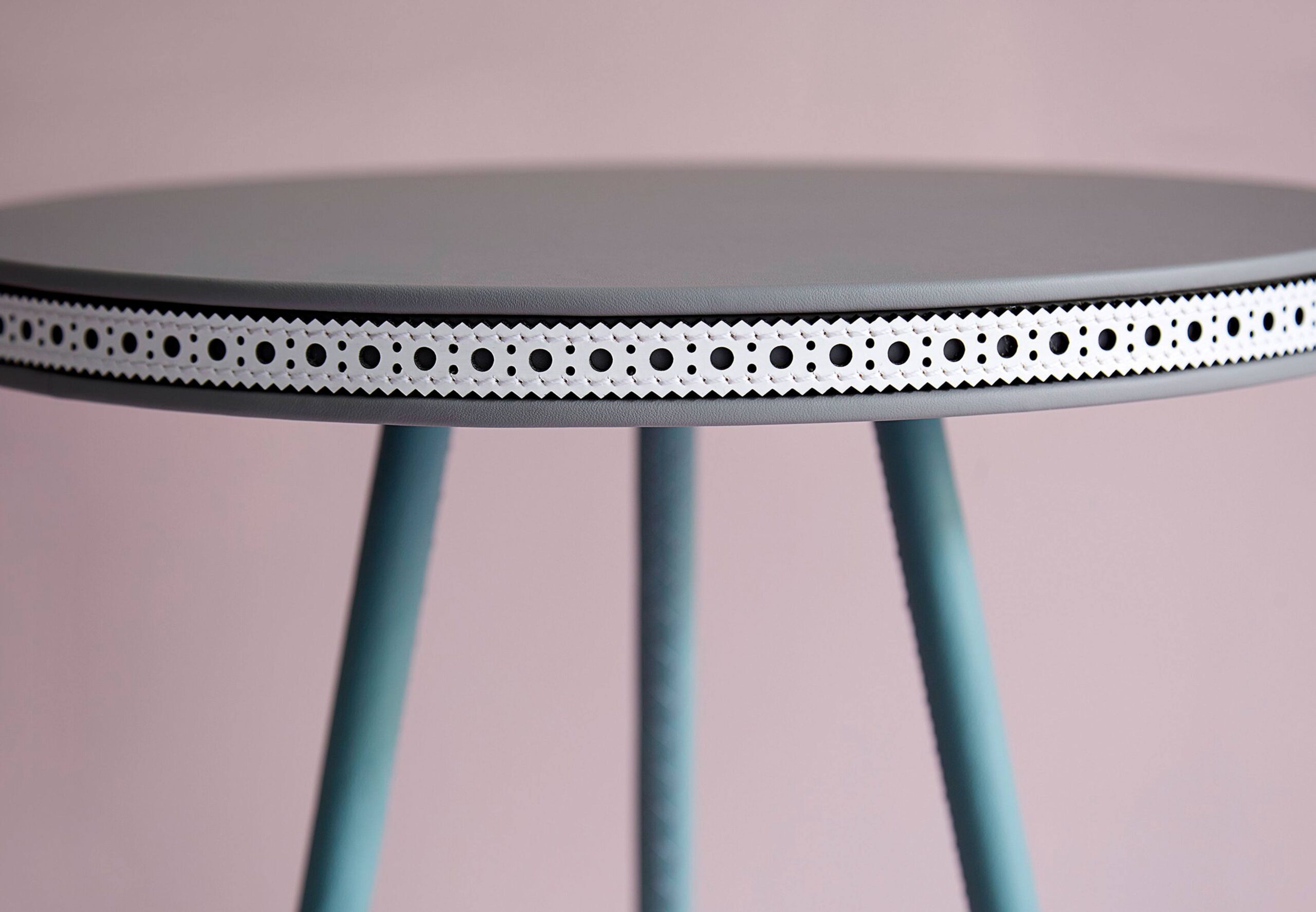
The Brogue family of tables is inspired by the leather broguing more typically seen on shoes native to Ireland and the classic three-legged Welsh cricket tables, designed to stand on uneven slate floors in the homes and public houses of Welsh mining villages.